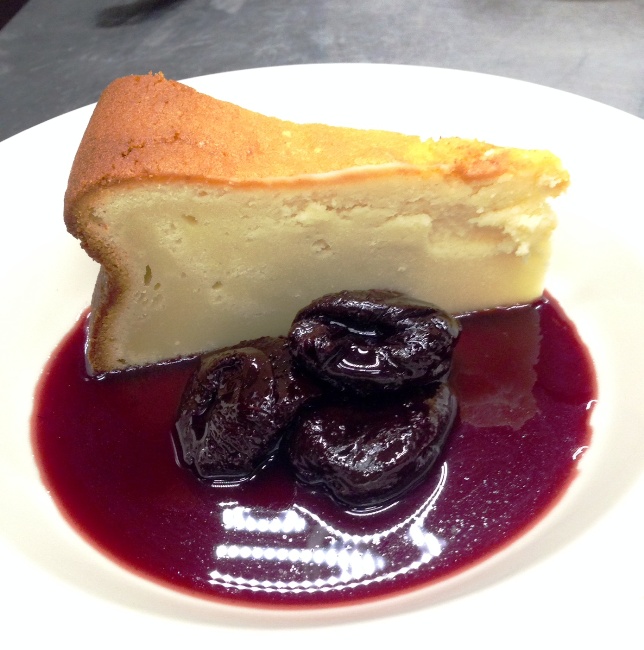
Recently, I noticed an article written by Martha Rose Shuleman in the food section of the New York Times that struck a chord. It was about prunes poached in red wine, a classic French bistro dessert, but also one that I have always had a hard time selling to diners here in Seattle. Their image as the old-person’s laxative aside, I am a big fan of prunes; I remember with fondness the version that my friend Scott Emerick served on the menu at his Madrona restaurant Cremant.
Anyway, this article got my attention because we have been playing with red wine poached prunes in desserts at both Le Pichet and Cafe Presse the last month or so. For me, prunes are a perfect dessert ingredient for early Spring, when even apples, pears, citrus and tropical fruits have run their course but rhubarb hasn’t yet arrived and strawberries are still week and weeks away. My idea is that, since most Americans find the idea of a whole bowl of prunes pretty daunting, we might use them as a garnish for a dessert instead.
The dessert I have in mind is a tourteau Poitevin, a sort of goat cheese cake from the region of Poitou, where prunes are also a local specialty. In the Poitou, a tourteau is lighter and more cake-like than an American cheesecake and is cooked until the top is blackened. We have made ours a bit richer than its French cousin, and livened it up with lemon zest. The prunes are simmered in a spiced red wine syrup and then finished with a shot of Cognac.
The result of our experiments has been available as a daily special at Le Pichet and Cafe Presse this week and will be on the new Spring dessert menu at Presse starting April 8, 2014.

Funny note: taking a suggestion from the California Dried Plum Commission, who believe that the term “dried plums” is more appealing than “prunes”, we have adopted the same verbiage. And I think it actually might be true.
Your Tourteau Fromage does not appear to be prepared in a pastry shell. Would you be willing to share a recipe so that I could try my hand?
Thank you
We have tried experiments both with and without crust. Most traditional recipes that I have seen for tourteau poitevin do not use a crust, but depending on how runny your batter is, a crust can be helpful. The photo showed a trial at Le Pichet that did not use a crust, as you noted.
I will try to get the recipe for this dish posted later this week.
Great – I was going to try Fernand Point’s recipe but as you know his recipes are brief and to the point without the things we are used to in more modern recipes.